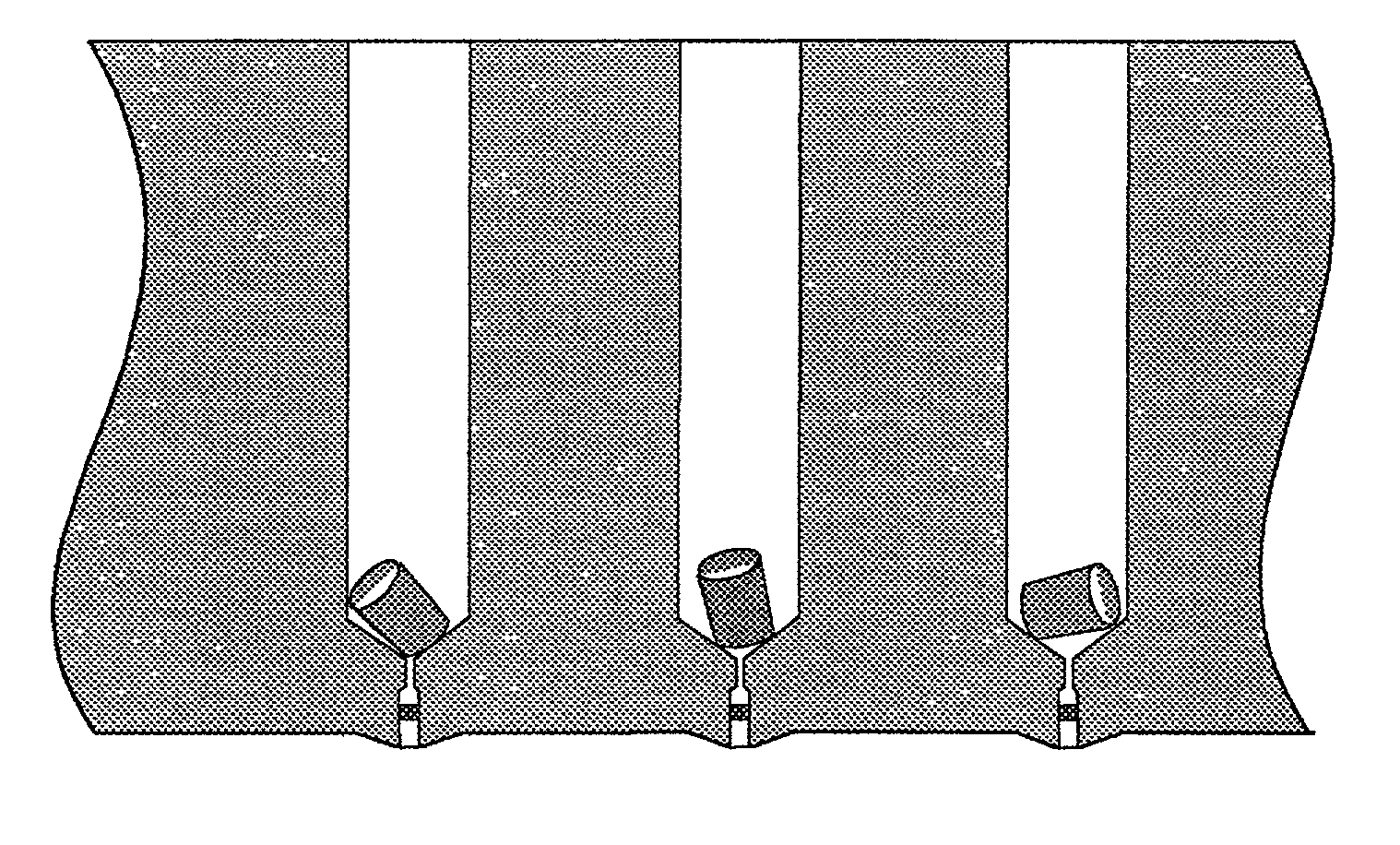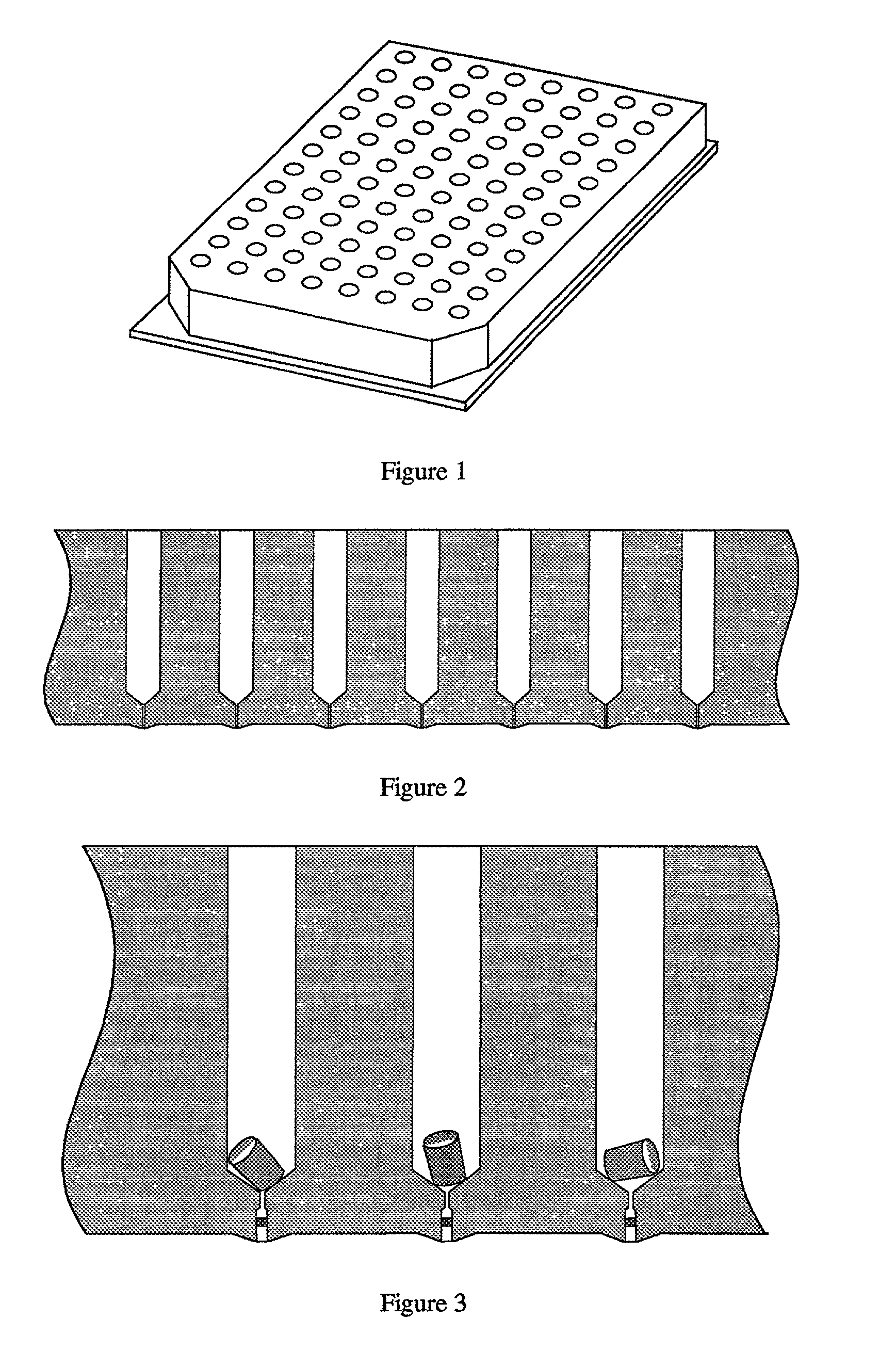Processing proteins from gels for analysis using mass spectrometry
a technology of mass spectrometry and protein, which is applied in the direction of biomass after-treatment, specific gravity measurement, particle separator tube details, etc., can solve the problems of increasing the wall area of the cavity enclosing the liquid, the chemical and physical effects of the cavity walls on the reaction during processing become more critical, and the loss of many peptides. , to achieve the effect of low loss of peptides and high yield
- Summary
- Abstract
- Description
- Claims
- Application Information
AI Technical Summary
Benefits of technology
Problems solved by technology
Method used
Image
Examples
Embodiment Construction
[0033] At first, two-dimensional gel electrophoresis is used as the separation procedure for proteins. Different methods based on one-dimensional gel separation can also be used, such as those which are applied using just the isoelectric point or the electrophoretic mobility.
[0034] A particularly favorable method uses a punch robot which automatically recognizes gel pieces which contain the protein by their color, punches them out of the moist gel and places them in the vessels with porous bases. Punch robots such as these are already commercially available in their initial form. They have cylindrical hollow punches with diameters ranging from 0.8 to 2 millimeters which punch out gel pieces which are round in shape. The hollow punches (fitted in place of pipettes on moveable heads) which push out the punched gel pieces, preferably using pipetting fluid or, less desirably, using gas, place them in the vessels. The punch robots contain cameras or scanners and recognition software for ...
PUM
| Property | Measurement | Unit |
|---|---|---|
| size | aaaaa | aaaaa |
| mass | aaaaa | aaaaa |
| surface area | aaaaa | aaaaa |
Abstract
Description
Claims
Application Information
 Login to View More
Login to View More - R&D
- Intellectual Property
- Life Sciences
- Materials
- Tech Scout
- Unparalleled Data Quality
- Higher Quality Content
- 60% Fewer Hallucinations
Browse by: Latest US Patents, China's latest patents, Technical Efficacy Thesaurus, Application Domain, Technology Topic, Popular Technical Reports.
© 2025 PatSnap. All rights reserved.Legal|Privacy policy|Modern Slavery Act Transparency Statement|Sitemap|About US| Contact US: help@patsnap.com


